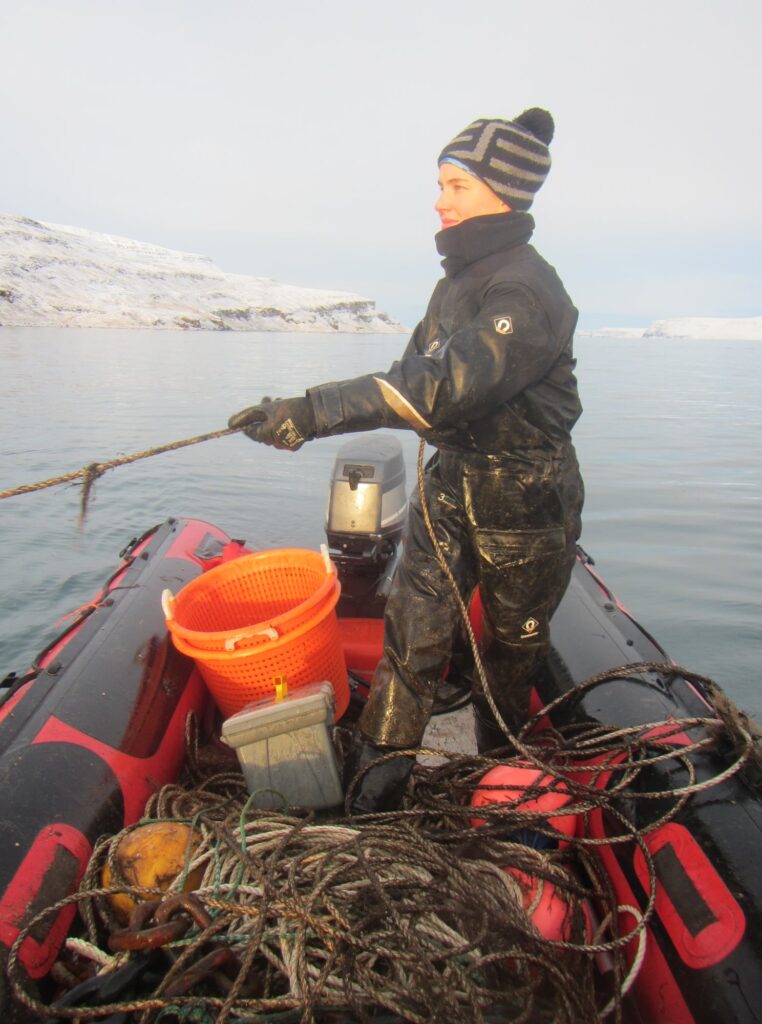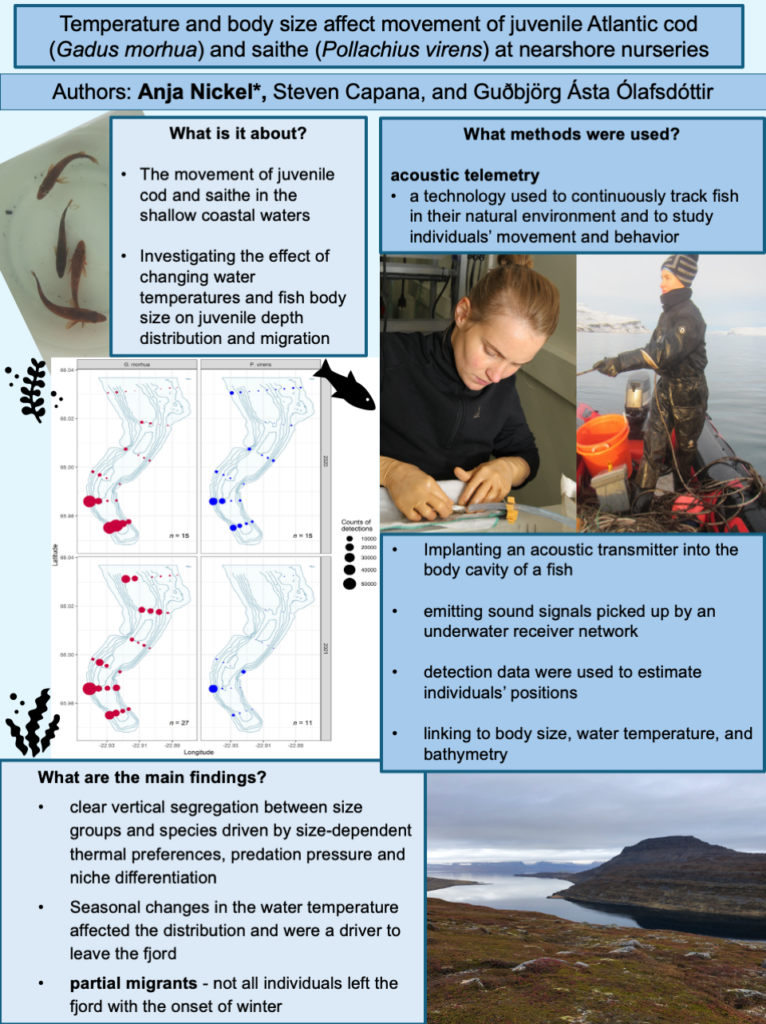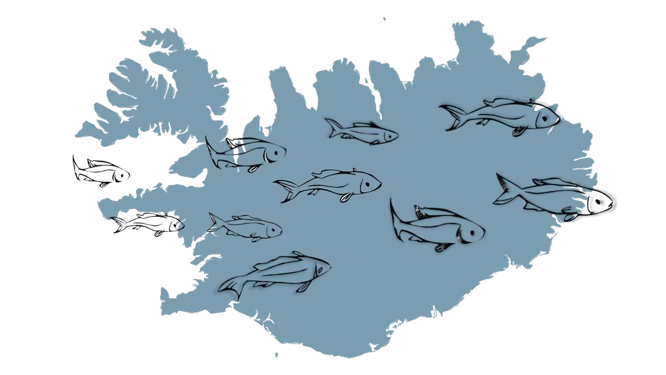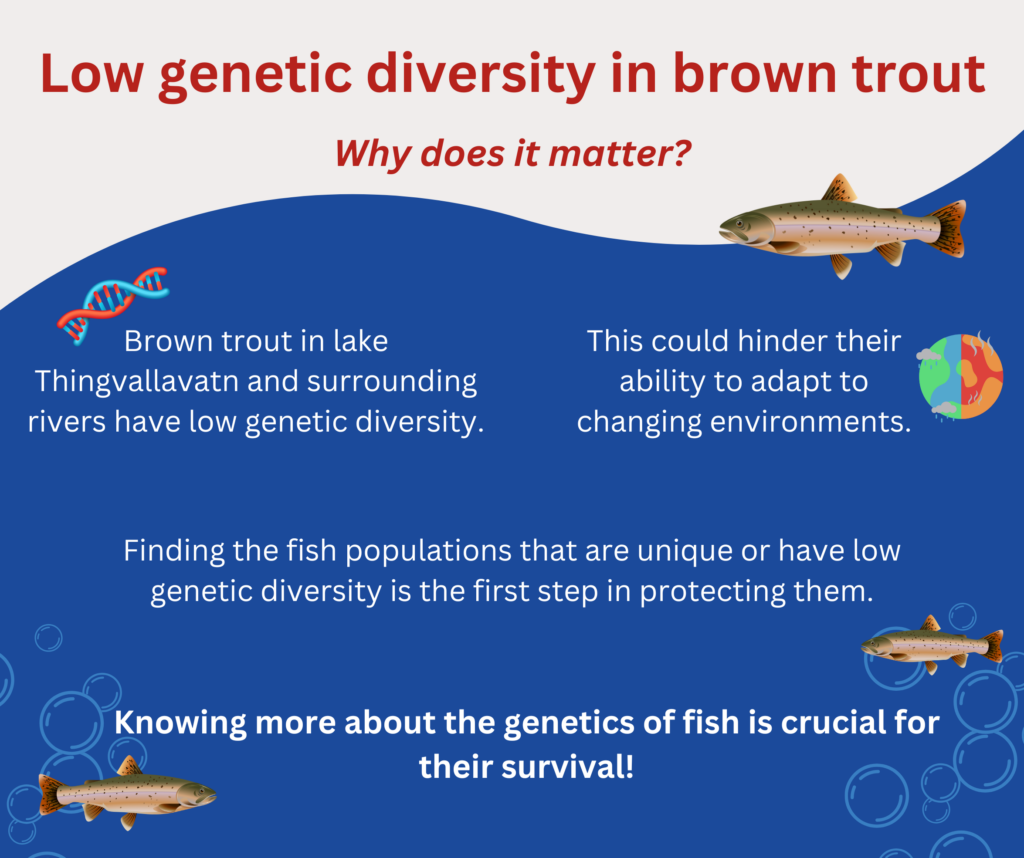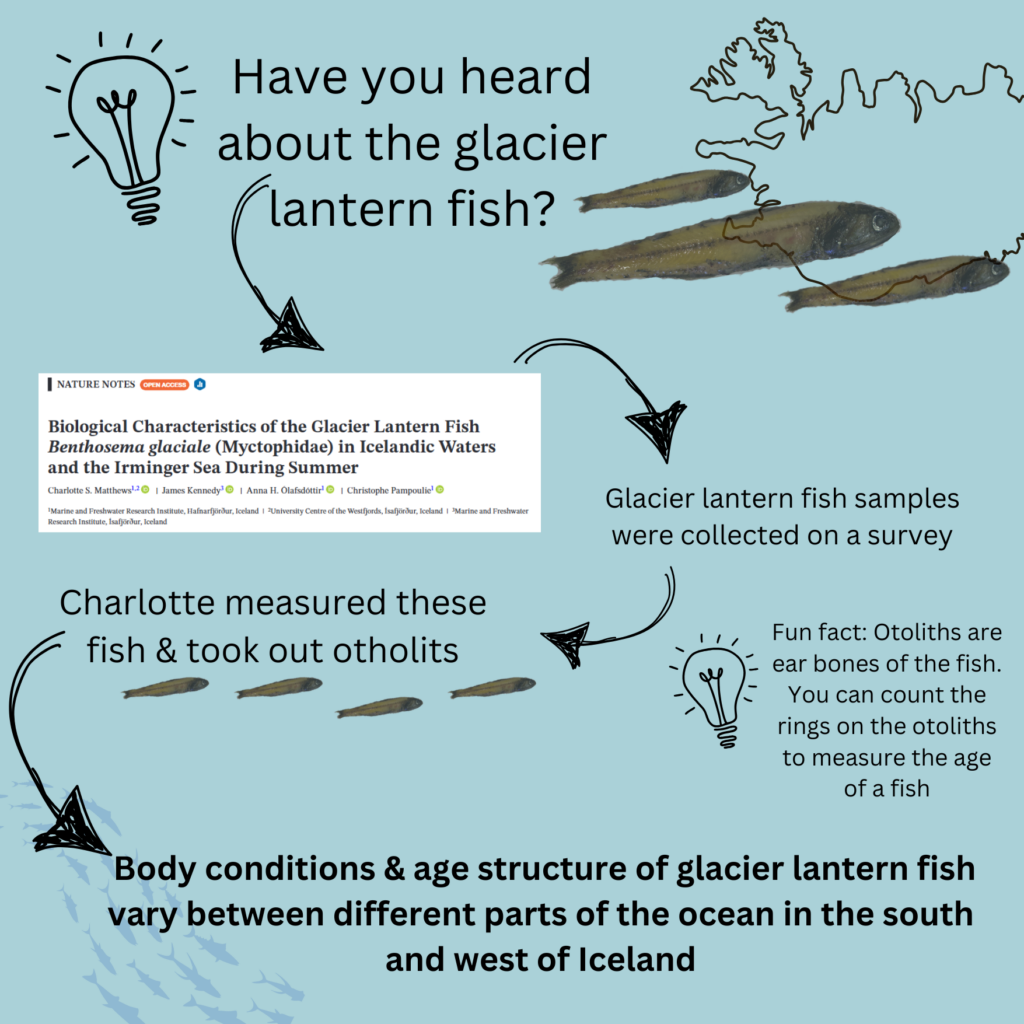Effects of size and temperature on cod movement
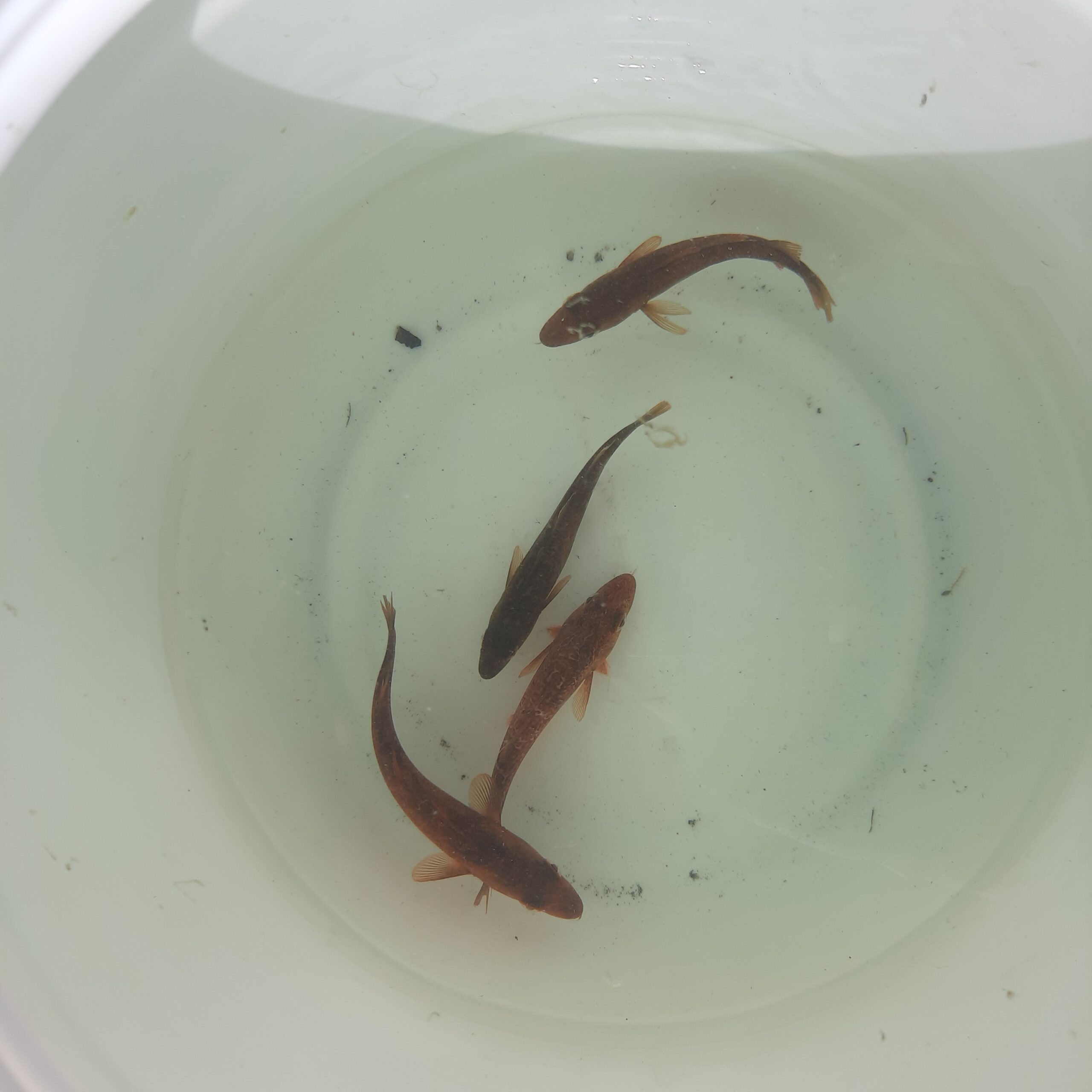
Anja Nickel and her co-authors, Dr. Steven Campana and Dr. Guðbjörg Ásta Ólafsdóttir, published a paper this past summer in Journal of Fish Biology about the movement of juvenile Atlantic cod (Gadus morhua) and saithe (Pollachius virens) in the shallow coastal waters. With the use of acoustic telemetry, Anja and her team, investigated the effect of changing water temperatures and fish body size on the juvenile depth distribution and migration timing from late summer until early winter. The study was based in Seyðísfjörður, Westfjords, Iceland.

What are the main findings?
Juvenile cod and saithe showed a clear vertical segregation between size groups and species, which were likely driven by size-dependent thermal preferences, predation pressure and niche differentiation among juveniles.
Seasonal changes in the water temperature affected the distribution of juvenile cod and saithe at nurseries and were a major driver for leaving the fjord.
Juvenile cod were partial migrants, meaning that not all individuals left the fjord with the onset of winter, but some fish (especially small individuals) remained in the shallow habitats when temperatures were near freezing (figure below).
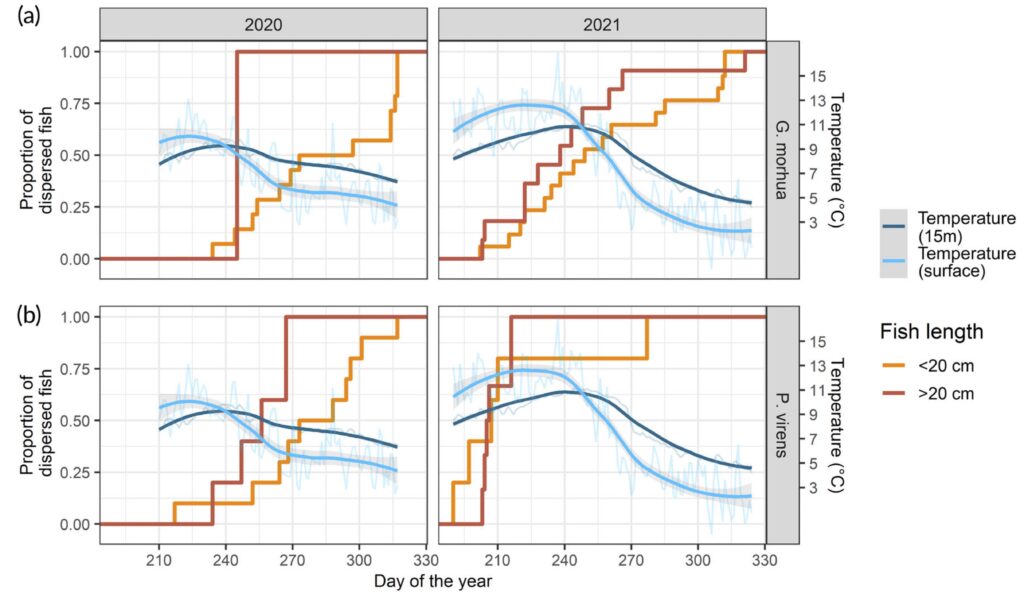
What methods did you use?
We used acoustic telemetry, a technology used to continuously track fish in their natural environment and to study individuals’ movement and behavior.
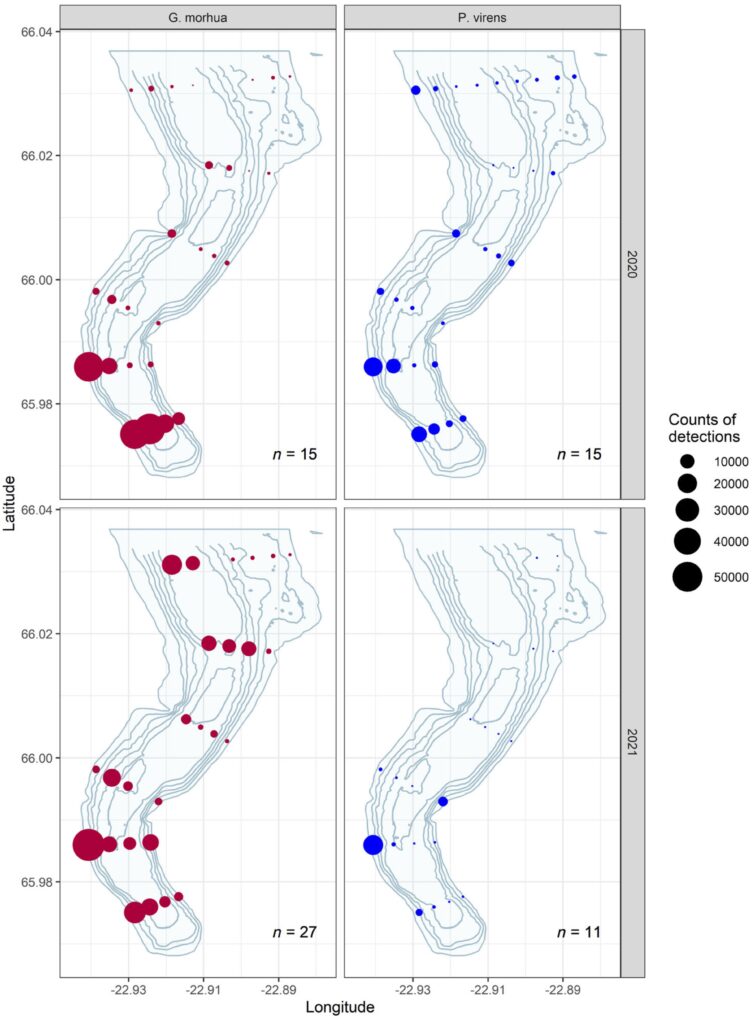
It involves implanting an acoustic transmitter into the body cavity of a fish, where it emits sound signals which are picked up by an underwater receiver network. The detection data were used to estimate individuals’ positions and were linked to body size, water temperature, and bathymetry.

